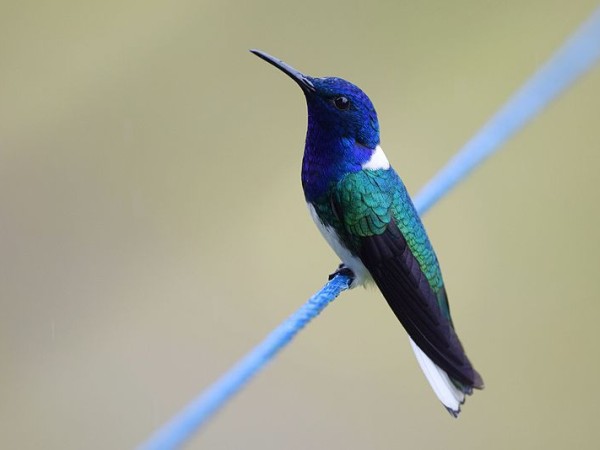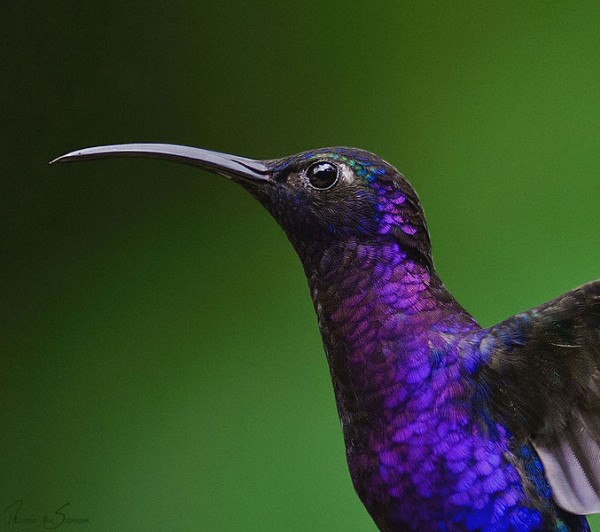
On a birding trip in Costa Rica:
Hummingbirds! Costa Rica has 50 species plus four extremely rare ones. All of them are year round residents except for one: our own ruby-throated hummingbird.
This makes it hard to pick two hummingbirds to highlight during my trip so I’ll go with two that have exotic names.
The white-necked jacobin (Florisuga mellivora) is a medium sized hummingbird that forages in wet lowlands and foothills to 3,300 feet. As with other hummers his name is based on his appearance. “White-necked” comes from his white neck patch. “Jacobin” refers to his hood, similar to that of Dominican friars. (Click here to see.)
Why isn’t he called a “white-necked Dominican?” Well, Jacobin was the French name for the Dominicans because their monastery was attached to the Church of Saint-Jacques in Paris. Unfortunately a political movement wiped out that innocent meaning. During the French Revolution a group of radicals met at the Dominican monastery to plan their Reign of Terror. The Jacobins terrorized France from 1792 to 1794.
At six inches long the violet sabrewing (Campylopterus hemileucurus) is the largest hummingbird in Central America. Common from 3,300 to 7,900 feet, some descend to lower elevations at this time of year.

Male violet sabrewings are very violet and though you can’t see his wings in this impressive photo, they’re the reason he’s called a “sabrewing.” Cornell’s Neotropical Birds site explains:
In the male, the outermost primaries are thickened and somewhat flattened and are curved at an angle; this combination of features resembles a sabre.
There’s one cool thing about this bird that I’ll miss, even if I see one. During the breeding season, which corresponds to the rainy season May to October, the males gather in leks of four to twelve birds to sing and attract the females. Wow!
(photos from Wikimedia Commons. Click on the images to see the originals)
Day 4: Hacienda Barú Wildlife Refuge
What beautiful pictures and an amazing trip for you.